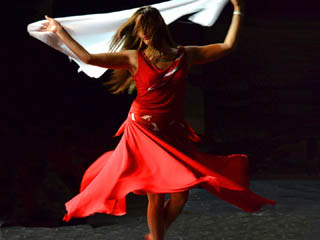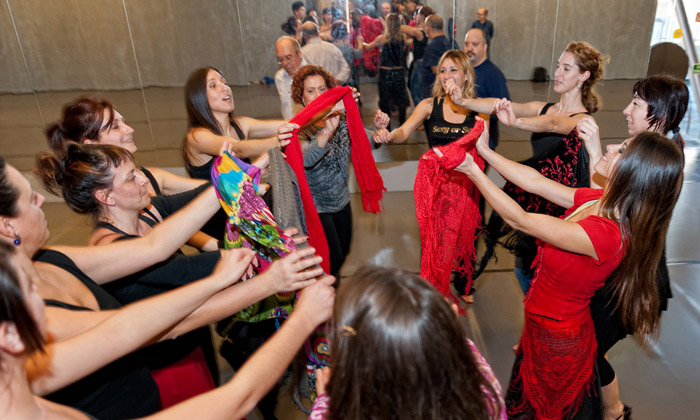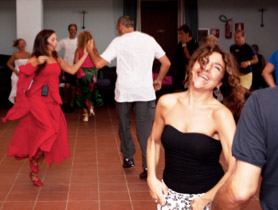The Pizzica ... because Dancing makes you feel good!
Returns for the seventh consecutive year the best Tango meeting of the year..
|
Like all the popular traditions, the pizzica and Salento’s tarantella lived, throughout history, many stories to tell. The pizzica in particular was born and has grown from a religious phenomenon and therapeutic since ancient times in which in Italy pagan gods were still worshiped and cultural traditions were followed closely linked to the rhythms of country life. In fact, the hypnotic music and the crazy rhythm of pizzica had a precise function of exorcism. It was used as a cure for the so-called "tarantolate", those women with a sort of psychological and existential distress which in its symptomatic manifestations expressed in very similar forms to hysterical convulsions and madness. In ancient times it was believed that the cause of this form of "insanity" was due to the bite of a spider, which was very common in the countryside of southern Italy, the tarantula, and the convulsions and loss of consciousness of women was the sign of a form of poisoning caused by the bite of the spider. In fact, the spider bite today is considered a legendary trait, and symptomatology of tarantolate is nowadays considered a very dramatic manifestations of discomfort especially of the female population, so subordinate and submissive in the rural culture of the past. Currently the practice of exorcism of the bite of the tarantula through dance has almost disappeared, although still some examples of this use remain. The stories of the past tell us that after the bite of the tarantula, the person fell into a state of shock from which he could awaken only music; the person skilled musicians played and danced for her until she could not undo the effect of the poison. This represented a collective moment during which we alienated from the constraints and moral rules of the community, a sort of liberating moment in which the entire population participated. Pizzica Pizzica is a lively dance, spread to the last war, and appears as a term in the sources at the end of the eighteenth century. Today the pizzica lives mostly in the memory of the elders of Salento, and provides the dance movements very characteristics related to the sense of circularity also accented by the same patrol. If you think that the pizzica danced in fairs and festivals of the country, patrolling with his musicians and his tambourine characterized the whole square, centralizing all the attention: it is not just a side dish, but it is the place chosen for the dance, it is its space for excellence. That's why in the various events in the square, but also in those performed during private parties such as baptisms and weddings, there is always the patrol and contributes to the rediscovery of folklore and traditional culture of Salento. The pizzica or dance fencing, provides a dance between men only, contemplating ways to screen for example mimicking the knife with the fingers of the hand and with other gestures are not easily interpretable. The dancers are found to be bound by the rhythm and movement: the bond that is established between them is the ancestral type and has its roots in the competition loving, making the dance a time of challenge in which you are confronted, exhibiting qualities agility, creativity and athleticism. |




The Festival of Taranta and recovery of tradition although the size of the therapeutic and curative pizzica are slowly disappeared, remains undisputed that dancing is good for the body and the spirit. The charm and beauty of a hypnotic music and frenetic has made inroads especially in the heart and minds of young people, especially in Salento were able to recover a cultural and musical tradition that was in danger of disappearing. Striking example of this recovery is definitely the touring festival that takes place every year in the most beautiful villages of Salento and culminates in Melpignano, during La Notte della Taranta. A festival that is fast becoming one of the most important events from the musical point of view, social and cultural recovery of the folk tradition, but also for the contamination and the innovations that the renewed interest in the pizzica has generated in recent years, attracting many international artists involved in the most anticipated musical event of the summer. |